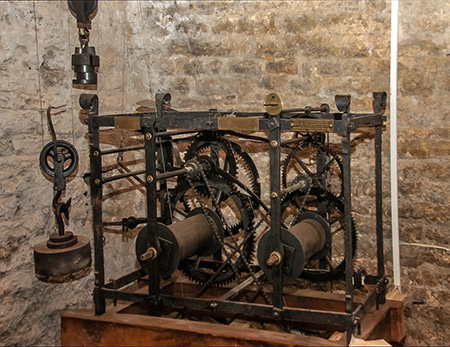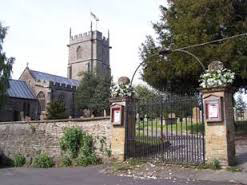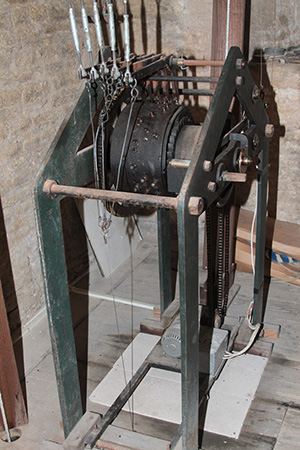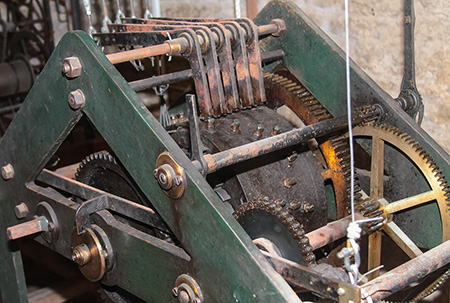Yetminster, Dorset
Compiled by Gordon Rendell, with some help from a leaflet in the church.
Yetminster, in Dorset has a ring of 6 bells, Tenor about 19 cwt and it also has an ancient chiming apparatus that plays the National Anthem at 3, 6, 9 and 12 o’ clock. One day, Rob Walker, the Yetminster and Sherborne town crier moved into a cottage very close to the church and, having had a very wearying day moving in, was about to get into his bed at midnight when suddenly the church clock hit out the National Anthem. “Good God,” he said, “do I have to stand to attention every night before I go to bed ?”
In about 1670, Thomas Bartholomew set up in business in Sherborne as a Clockmaker, Whitesmith and Blacksmith. The first records of the family appear in the Sherborne church records in 1674 with the baptism of Thomas, son of Thomas and Anne. Thomas senior, had a large family – 19 children. The Bartholomews continued as clockmakers in Sherborne for three or four generations; the last, Josiah dying in 1792.
One of the first turret clocks that Thomas Bartholomew made was for Yetminster church. His name is on a small brass plate attached to the clock with the names of the three churchwardens who commissioned him to make it.
When Thomas Bartholomew made the clock, he used the frame of a much earlier clock, circa 1600. There are no records to state whether this earlier clock was in Yetminster tower or obtained from elsewhere. This is not to belittle Thomas’ work, as the works of the clock are all his. The old clock frame, being pre 1656 would have held a verge and foliot movement; as the pendulum, invented by the Dutchman Christopher Huygens was not in existence before that date. It is remarkable that despite the troubled times in England around the 17th c, knowledge of how clocks were made spread so rapidly that by 1682, Thomas Bartholomew in Sherborne, was able to make such a clock for Yetminster; and to make it so well that it is still working satisfactorily more than 300 years later.
The old frame circa 1600, is a fine example of the blacksmith’s trade, not only because it is finely decorated and proportioned but its joints so accurately constructed to give the frame the rigidity required to work accurately. Thomas Bartholomew’s own work is quite different. He added relatively heavy straps to the frame secured by his own hand-made nuts and bolts, long before Mr. Whitworths’ standardisation
There are two trains, “the going motion”, controlled by the pendulum and “the strike”; the latter, which on completion of its performance, triggers the chiming mechanism.
The present National Anthem chime on five of the bells was installed in 1897 to celebrate Queen Victoria’s Diamond Jubilee. But it is very probable that there was some kind of Carillon before this possibly made of wood, similar to the one at East Coker, as the mechanism that triggers the chime is almost certainly part of the 1682 clock. There is no record of what it played.

Yetminster clock has no face!


